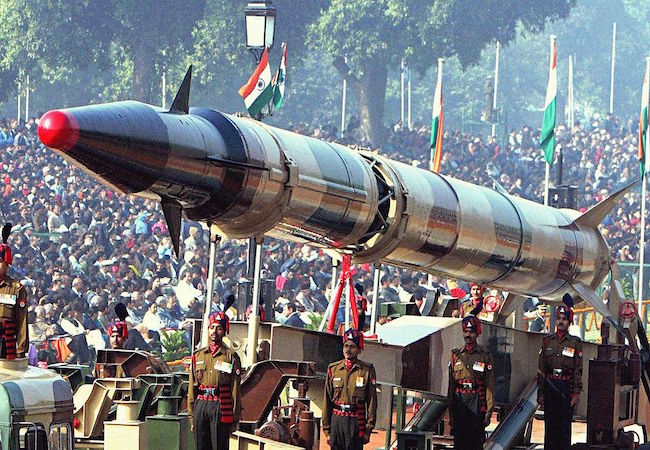
By Asma Khalid
Strategic stability in South Asia has remained fragile due to multiple factors. Three common threats to Strategic Stability in South Asia have been recognized as crisis instabilities, arms race and escalatory dangers between two nuclear adversaries India and Pakistan. Security experts have analyzed that emergence of security tri-lemmas (among China-India-Pakistan) also pose a serious challenge to South Asia’s strategic stability as well as to the deterrence equilibrium. The development of advanced conventional and nuclear weapons system with high level of readiness and precision strike capabilities, and supersonic and hypersonic missiles with the capability to destroy adversary’s strategic weapon system are highly destabilizing for the region.
Both South Asian nuclear adversaries are introducing several offensive and defensive weapons and are engaged in improving the ranges and technological sophistication of their arsenals. However, India is modernizing its missile system naturally creating uneasiness for Pakistan. The successful launch of its nuclear-capable Intermediate-Range Ballistic Missile (IRBM) Agni-IV and Intercontinental Ballistic Missile (ICBM) Agni-V has worsened the regional security situation. India is also working on its Ballistic Missile Defence (BMD) System and has been pursuing it since 1990s. India-US nuclear agreement of 2005 was the major milestone for India to fulfill its aspiration as the nuclear deal allowed the US to provide nuclear related facilities that India would not only use for peaceful purposes but also to fulfill its nuclear strategy goals of operationalization of a nuclear triad; and successful induction of a BMD system.
Although India is working on its BMD system, it has not yet deployed it. BMD system is yet to be tested in integrated mode by using low-altitude and high-altitude Advanced Air Defence interceptor missiles. However, it has conducted several successful tests of its missile defence system in a separate mode. Additionally, India is in the process to strengthen its missile defence shield. India’s rationale for the BMD is based on multiple factors including security, prestige, power projection and to fulfill its geostrategic and geopolitical goals in region. With the successful induction of its BMD system, India will be the fifth country to have operationalized BMD-system.
Implications of India’s BMD for?
The Induction of Ballistic Missile Defence System (BMDS) in South Asia will destabilize the strategic stability of the region for the following significant reasons: First, operationalization of BMD system will neutralize Pakistan’s ballistic missile capability; second, it encourage the state to launch first strike; third, it will increase the security dilemma and encourage the arms race because operationalization and induction of BMD system will force Pakistan to make quantitative and qualitative improvements in its missile inventories to ensure its security.
Pakistan’s Response
In light of above facts it can be inferred that due to changing regional security scenario, induction of sophisticated weapons and unresolved disputes, the peace in South Asian security environment has remained fragile. India’s BMD has the ability to disturb the deterrence equilibrium. Therefore only policy potion for Pakistan is quantitative and qualitative improvements in its nuclear weapons and missile program to maintain strategic stability and ensure the credibility of its nuclear deterrence. Thus, Pakistan is not seeking parity with India but only maintaining the balance of power to maintain peace and stability in region.
Asma Khalid is Research Associate at Strategic Vision Institute (SVI), a think-tank based in Islamabad, Pakistan




